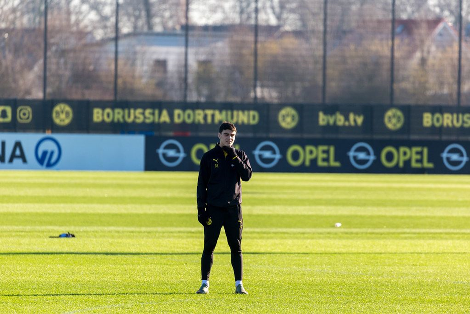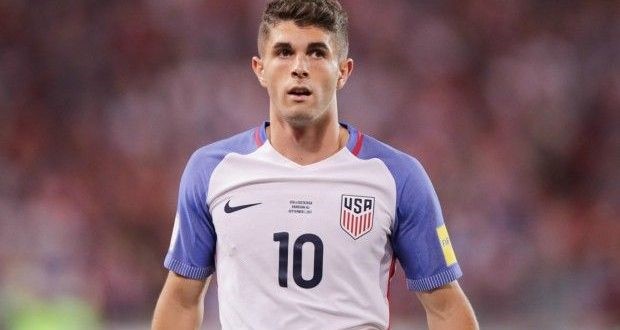America’s Golden Generation of Soccer Players Can Become a Global Force

Giovanni “Gio” Reyna training for Borussia Dortmund
The tag “golden generation” is probably overused in soccer. One of the issues with the term is that it is often used as a prophetic assumption for future glory but rarely applied in hindsight. For instance, England fans speak of a golden generation when the likes of David Beckham, Paul Scholes, Wayne Rooney and Steven Gerrard played for their national team. But that team won nothing at international level and largely disappointed the fans. The Belgium national team is cited as a current golden generation – Lukaku, Hazard, De Bruyne et al. – but they too have yet to win a major tournament.
And so it is that in 2021 America has finally been tagged as having a golden generation of players: a pool of talent tipped to outstrip the feats of those that have come before. American soccer pundits are rightly excited about the prospects, particularly for the USMNT in future World Cups. But there is a long way to go, and the US won’t be the first – or last – nation to fall flat after heralding a golden generation of soccer players.
Europe’s biggest clubs feature Americans
So, why the excitement? Soccer is different from other sports, particularly in terms of monitoring young players and college scrutiny. Yes, the MLS has the SuperDraft each year, where teams will pick the cream of the talent from colleges. But often the best players will join teams right out of high school, and MLS teams have set up their own academies, giving the draft a waning sense of importance in recent years. Perhaps most importantly, the most precocious talents will head off to Europe. That’s the case with the current glut of American players with potentially huge futures.
Barcelona, Juventus, Manchester City, Bayern Munich, Borussia Dortmund and Chelsea all have American players on their books. These are among the world’s greatest soccer clubs. With all due respect to recent stars of the USMNT like Landon Donovan and Clint Dempsey, they were never at a level elite enough to be considered by teams of this stature. But there is a large caveat: we are mainly talking about potential here, and many of these players have to prove that they can make it, never mind be counted among the best US soccer players.
2026 World Cup should be a target
Still, it is hard not to get excited. The USMNT is rated as a 100/1 outside chance in the online sports betting at 888 sport for the 2022 World Cup. But head coach Greg Berhalter should perhaps be looking towards the 2026 World Cup, where the USMNT will have the benefits of home advantage as hosts of the tournament (alongside Canada and Mexico). By 2026, Players like Gio Reyna (18-years-old), Weston McKennie (22), Chris Richards (20), Tyler Adams (22), Josh Sargent (21), Timothy Weah (20), Konrad de la Fuente (19) and, of course, Christian Pulisic (22) should be considered in their prime.

Christian Pulisic playing for the USMNT
The 2026 World Cup feels like a unique chance for the USMNT to really make a mark on global soccer. If the players mentioned above, alongside several others currently developing in the MLS, then the United States will have a formidable team to bring to the tournament. Perhaps it’s a little far-fetched to say the team could win it, but there might be enough of a showing to revolutionize soccer in the country. That was the aim when the US hosted the 1994 World Cup, but having a team that excites the nation could inspire yet more generations.
Having a look back at the best US players of the 2010s, the country has produced some decent players, hard-working pros like Dempsey, Donovan, Tim Howard, Geoff Cameron and Jozy Altidore. But there was always a ceiling for these players. The same doesn’t apply for the current crop coming through the ranks, but potential does not equate to success – in any sport.
